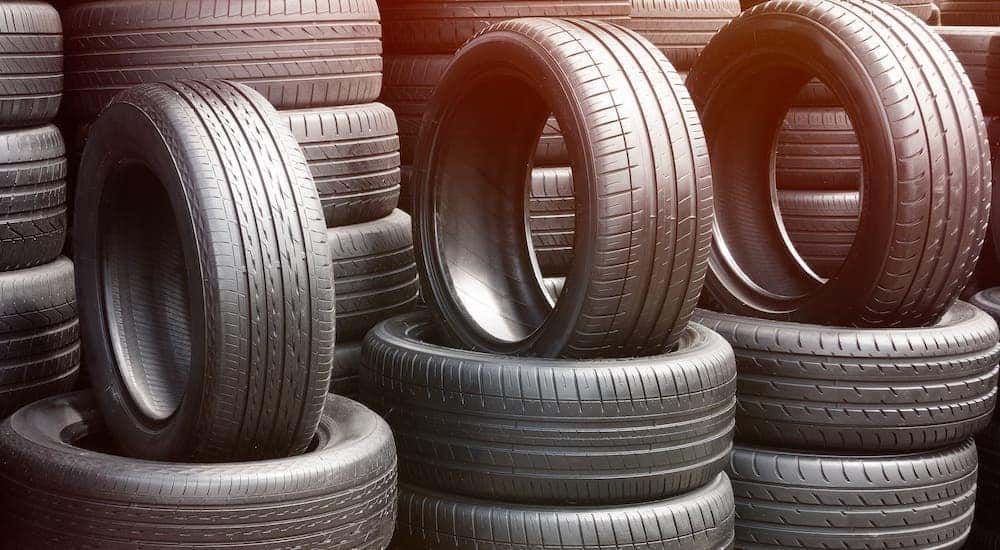Unbelievable Discount Tires Morris IL: Shop Currently for Unbeatable Savings
Unbelievable Discount Tires Morris IL: Shop Currently for Unbeatable Savings
Blog Article
Tire Service: The Influence of Climate Condition
When it comes to ensuring optimum performance and safety when traveling, understanding the influence of climate problems on tire service is essential. From scorching heat to icy roadways, each climate component can substantially influence tire functionality and general driving experience. By diving into the results of varying weather on tires, motorists can gain valuable understandings that may improve their car's efficiency and durability. In this conversation, we will explore the intricate partnership between climate condition and tire solution, clarifying the importance of weather-specific tire upkeep practices and considerations.
Warm and Tire Efficiency
When exposed to heats, tires experience modifications in performance that can considerably influence vehicle safety and handling. The warmth produced from extended driving or heat conditions triggers the tire rubber to soften, leading to minimized step life and raised wear. As the rubber becomes softer, the tire's grasp on the roadway reduces, influencing stopping distances and general grip. In severe cases, excessive warmth can even cause tire blowouts, positioning a serious security risk to the car and its passengers.
Moreover, high temperatures can accelerate the process of tire aging, causing the rubber to weaken faster. This can result in splits, bulges, and other forms of damages that jeopardize the structural integrity of the tire. To mitigate the results of warmth on tire efficiency, drivers need to consistently examine their tire stress, rotate tires to guarantee even wear, and evaluate for any kind of indications of damage. Additionally, using tires especially created to endure heats can help keep ideal performance and safety and security when traveling.
Cold Weather Condition Results
Cold weather problems can have a considerable impact on tire performance and security. In cool weather, tires might likewise lose air stress extra swiftly, which can impact managing and gas performance.
To mitigate the effects of chilly climate on tires, it is crucial to frequently inspect tire stress and inflate them to the supplier's recommended degrees. Making use of winter or all-season tires designed for cold weather conditions can also improve traction and grip on icy or snowy roads - discount tires morris il. Correct tire upkeep, consisting of regular evaluations for wear and damages, ends up being even much more critical during colder months to ensure optimal efficiency and safety and security
Rainy Issues Influence
Throughout rainy problems, tire performance and security can be significantly influenced by the damp roadway surface areas and lowered exposure. The walk pattern of tires plays a crucial function in keeping traction on wet roadways. Tires with damaged footsteps are much more vulnerable to hydroplaning, where a layer of water develops between the roadway and the tire surface, causing loss of grip. To combat this, chauffeurs must regularly check their tires for sufficient step depth and take into consideration purchasing my explanation tires specifically created for wet conditions.

Snow and Tire Safety
When driving in snowy problems, having the best tires can make a significant distinction in safety and performance. Winter months a fantastic read tires are created with special rubber substances and tread patterns to supply better grip on snow and ice compared to all-season tires.
In enhancement to using winter months tires, it is vital to ensure they are effectively pumped up. Winter can trigger tire stress to drop, influencing traction and handling (mopar tire service specials). Consistently checking and preserving the right tire pressure is necessary for optimal performance in snowy problems

Weather-Related Tire Upkeep
Weather-related tire upkeep encompasses a variety of techniques intended at ensuring optimal tire function and longevity in different weather condition situations. One crucial facet of weather-related tire maintenance is tire stress guideline. Evaluating tire step routinely and replacing tires when step wear gets to a specific deepness is crucial for preserving traction and stability in unfavorable weather condition.
Final Thought
Finally, climate problems have a considerable effect on tire performance and safety. From heat influencing tire stress and put on to winter reducing grip, it is necessary to take into consideration the climate when keeping and utilizing tires. Stormy conditions can decrease grip and result in hydroplaning, while snow can increase the threat of crashes if tires are not appropriately furnished. Weather-related tire upkeep is critical in guaranteeing optimal efficiency and security when traveling.
In this discussion, we will certainly check out the intricate connection in between weather condition conditions and tire service, losing light on the significance of weather-specific tire upkeep practices and factors to consider.

Report this page